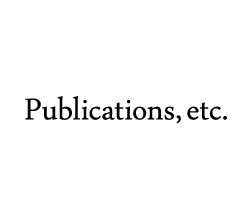

|
|
- Zen Master Hakuin's Song of Zazen
- Copyright © by Mumon Yamada
Translated by Norman Waddell
- B5size softcover /272 pages
Copyright © by Mumon Yamada
Translated by Norman Waddell
Distributed by the Institute for Zen Studies
Published by the Asia South Pacific Friendship Association
Hourin-ji, 457 Konoe-cho, Kamigyō-ku, Kyoto, Japan
First edition, 2021.4.20
3,000yen (tax included)
- Book details (name of author, etc.):2021/04/20
- Translator’s Preface (by Norman Waddell):
In 1960 Yamada Mumon Rōshi (1900–1988) published a series of loosely-linked essays titled Zazen Wasan Kōwa (translated here as Essays on Hakuin’s Song of Zazen) which had appeared serially during the 1950s in the periodical Hanazono, issued by Myōshin-ji of Kyoto. Zazen Wasan Kōwa was the first of many writings on Zen Mumon Roshi published during the final twenty-eight years of his life. It has proved to be one of his most popular works, issued many times and almost continually in print since its first appearance. Zazen Wasan (The Song of Zazen), the subject of the essays, is a recitation text composed in 44 lines of verse by the 17th century Zen master Hakuin. It began being used around 1900 at religious services in Rinzai temples, and has for over a hundred years now been one of the staples of the Rinzai liturgy, recited at daily temple ceremonies, zazen meetings, and other religious gatherings.
Mumon Rōshi, one of the most respected teachers of modern Rinzai Zen, was also one of its most prolific authors, apparently regarding the printed word—which his Myoshin-ji predecessor Hakuin called “verbal prajna”—an essential weapon in his teaching arsenal. When they were published in 2004, Mumon Rōshi’s complete works, Mumon Zenshū, filled sixteen hefty volumes, embracing a wide variety of writings: religious discourses, homilies, essays aimed at the general reader, and, for a more advanced audience, a large body of learned commentaries on classic texts such as the Blue Cliff Record, the Record of Lin-chi, and Hakuin’s Poison Words for the Heart Sutra.
But this first book seems to have had special meaning for Mumon Rōshi. He is said to have unhesitatingly singled out Zazen Wasan Kōwa when asked in his later years which of his works he would most like to see translated into English. It was altogether fitting, then, for Mumon’s student Kōno Taitsū Rōshi to commission a translation of the book as part of celebratory events Myōshin-ji scheduled for 2020 to commemorate the thirty-third anniversary of Mumon Rōshi’s death.
One of Mumon’s primary aims in the essays was to impart the true meaning and utility of the Zen teaching to contemporary readers, many of whom, including the first postwar generation to receive a modern Western-style education, had turned away from Japan’s traditional culture and religion in the wake of her crushing wartime defeat. But as Daisetz Suzuki remarked in his preface to the original edition of Zazen Wasan Kōwa (1962), what gives Mumon’s book its unique flavor and makes it different from previous works by Zen teachers are his forays into matters of ordinary, everyday life, expanding his Zen teaching to encompass interests that are closely linked with his lay audience. He responds to a news article that catches his eye in the morning paper, delivers animadversions on contemporary political and social trends, explores matters as diversified as the uses of atomic energy, the court culture of 17th century France, a trip to Hokkaidō with a group of young mendicant monks, a leper hospital on an island in the Inland Sea, Albert Schweitzer and other noted Western figures—and more. In doing this Mumon gives readers open access to the opinions, judgments, and practical thinking of a leading Zen master—a map of his planet, so to speak. And this, as Daisetz Sensei points out, is also a feature that had not been seen before in writings by modern Zen teachers.
All footnotes and parenthetical information inserted into the text in brackets are mine. Japanese names are given in the Japanese style, family name first.
I would like first of all to thank Taitsū Rōshi, former chief abbot of Myōshin-ji, for allowing me to undertake this work. I am indebted to Nelson Foster, Tada Minoru, and Higuchi Shōshin for reading and offering suggestions on portions of the text; to Tom Kirchner, for general counsel and suggestions; to Bruce Bailey, for his continued generosity in helping make Hakuin better known in the West. A special debt is owed to Ian Hamilton, whose skillful and ungrudging efforts in editing the manuscript have help smooth out many of the kinks and crumples in its borrowed plumage.
Foreword (by Yūgen-kutsu Taitsū):
When Zazen Wasan Kōwa was first published in 1962, well over a half-century ago, Zen masters wrote their books in a distinctive style that strongly reflected their careers and the character of their religious teaching. They expressed their ideas and presented their subject matter in a way that demanded specialized understanding, so it was no easy matter for general readers to grasp their meaning and gain understanding from them. Mumon Rōshi’s book, consisting of a series of essays he had contributed to Hanazono, a monthly periodical Myōshin-ji published for distribution to temples and the lay community, was written in a modern perspective that addressed a postwar audience, dealing with matters that they would all be familiar with and instructed by. Unexpectedly, as it turned out, the book became a primer of sorts, one which served to introduce people not only to Zen but Buddhism as a whole.
Since first being introduced to Western audiences through the English writings of Suzuki Daisetz, Zen has continued to evoke keen interest in the Western intellectual community, and has inspired many Westerners to undertake the practice of Zen. It is my hope and indeed expectation that this translation of Mumon Rōshi’s essays will further deepen the understanding of Zen Buddhism throughout the world, and stimulate students in even greater numbers to undertake the practice of Zen as well.
|
Post a comment

